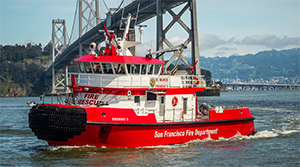On a heart-stopping clear day in March, San Francisco’s new fireboat, veiled in a gauzelike spray of water shooting from its six cannons in front of The Embarcadero, created an impressionistic rendering of the Bay Bridge.
The 88-by-25-foot St. Francis was designed by Jensen Maritime Consultants and built by Vigor Industrial as a multipurpose top-of-the-class fireboat. First, it is a floating pumper, supplying the city’s needs in case its water system is disrupted. Second, it can function as a conventional fireboat, equipped with six Stang monitors to fight waterfront blazes.
St. Francis was christened on Oct. 17, 2016, the 27th anniversary of the 1989 Loma Prieta earthquake. The quake ruptured the city’s water lines, rendering hydrants useless to fight fires that blazed out of control. The mission of St. Francis is to plug that hole in the emergency response system.
Officially named in honor of St. Francis of Assisi, the city’s namesake, St. Francis joined two older fireboats in the San Francisco fleet: Phoenix (Fireboat 1) and Guardian (Fireboat 2). St. Francis is also called Fireboat 3.
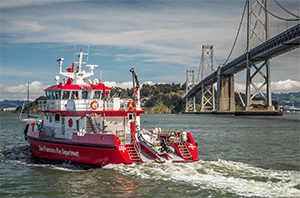 |
|
St. Francis, shown taking a spin near the Bay Bridge. |
“When responding to incidents on San Francisco Bay, it’s expedient to use ‘Fireboat 3’ to communicate via radio to our fire dispatch communications center and to the U.S. Coast Guard,” said fireboat officer Lt. Andrew Sobozinsky.
The engine room of St. Francis is dominated by three Cummins QSK19-M Tier 3 engines each rated for 750 hp at 1,800 rpm. When pumping, they provide power to three 6,000-gpm Counterfire ESF 300-550 fire pumps. “One engine is dedicated for a fire pump, and the other two engines can pump or propel,” Sobozinsky said.
The easiest and most reliable engineering solution to meet the volume and pressure requirements for the fireboat’s primary mission was to run the pumps from the propulsion engines off the flywheel, and the boat off the front of the engines. St. Francis, when acting as a pumping station, would be tied to a dock, pumping millions of gallons of bay water continuously, day after day, into the city’s water system.
“We are able to pump up to 18,000 gpm at 150 psi using all three pumps in parallel,” Sobozinsky said. “Additionally, we can pump 6,000 gpm at 300 psi using two pumps in series.” To supply the city with bay water, St. Francis can connect to manifolds located in the harbor.
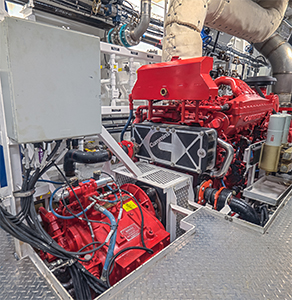 |
|
Propulsion for St. Francis is provided by a pair of Cummins QSK19-M diesels. |
For propulsion, the two outboard Cummins engines are connected to Reintjes WAF 364 gears at a 4.92:1 reduction ratio. They turn Sound CF-3 62-by-55-inch stainless steel propellers. A Northern Lights M99C13 genset provides electrical power.
Added maneuverability is provided by a Wesmar V2-2ONS bow thruster powered hydraulically off the front end of the dedicated fire pump engine. “A little cheater,” said the pilot, Jean Pinto. “That’s nice, and the boat also has great visibility and maneuverability.”
The vessel is also equipped for marine rescue and medical services, and has sophisticated environmental hazard detection equipment.
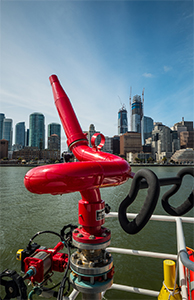 |
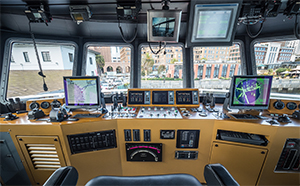 |
|
|
The fireboat’s six Stang monitors can deliver 18,000 gallons per minute. |
Pilothouse electronics include equipment from Furuno and Simrad. |
|
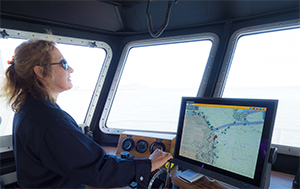 |
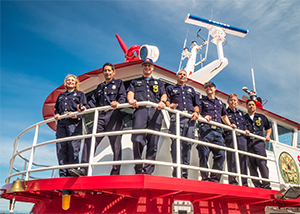 |
|
|
Pilot Jean Pinto takes the fireboat out from the pier. |
The crew of St. Francis: Pinto, Lt. Andy Sobozinsky, EMT Chris Vickery, fire truck driver Patrick Hannan, EMT Joseph Hanley, engineer Dave Owne, and engine officer Arnold Choy. |

